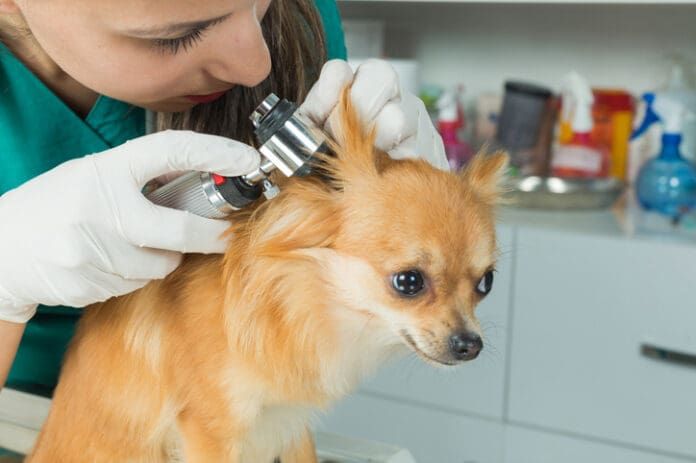Ear disease is merely a symptom that your dog’s body is dealing with another problem; there is always a reason why an ear infection develops! The challenge is to ferret out what, exactly, is the underlying cause. Start by looking at the three P’s: Primary, Predisposing, and Perpetuating causes.
(1) Primary causes lead directly to inflammation of the ear and include:
- Clean canine ears — free of inflammation, debris, or odor — are made possible through a superior diet, holistic care, and regular cleaning.
- Environmental allergies or adverse food reactions; these account for a whopping 97 percent of primary causes!
- Parasitic disease such as mites. Mites create a dark discharge, but so does yeast. If your vet doesn’t run a cytology, the conditions can be easily confused. In fact, mites are frequently overdiagnosed, and are less of an issue than we might think.
- Foreign bodies such as foxtails or other grass awn.
- Keratinization disorders. These are conditions that affect the skin’s surface appearance and may involve abnormalities in skin cell production, glandular production, and skin cell breakdown. Seborrhea, for example, produces excess sebum and build-up of skin cells. Though seborrhea is more common in certain breeds (such as Cocker Spaniels), on the whole, primary keratinization defects are uncommon.
- Autoimmune disease, such as pemphigus. A biopsy must be performed to diagnose autoimmune disease.
- Growths or polyps from glandular tumors such as adenoma and carcinoma.
(2) Predisposing factors in your dog that make her more susceptible to ear disease include:
- Variations in ear conformation. Shar-Pei, for example, may have narrowed ear canals.
- Moisture in ears, particularly in dogs who frequently swim or dive, often exacerbated by floppy ears. Nonetheless, this, too, is overrated as a reason for ear infections, particularly if the dog is only an occasional swimmer. The design of the dog’s ear — just like ours — is meant to be protective and prevent water from causing a problem.
- Excess hair in the ear canal.
- Inappropriate prior treatment. If your dog has had an ear infection that was not properly treated, improper care can accelerate the disease process by negatively altering the environment in your dog’s ears.
(3) Perpetuating factors make us ask why the ear infection keeps coming back. It could be that changes in the lining of the ear canal were never addressed. Your dog’s condition may have started out as primary (disease) but developed into a new problem. Recurrent bacterial and yeast infections and infection of the middle ear can fall into this category.
For more on diagnosing and treating ear infections, have a look at Whole Dog Journal‘s exclusive ebook Ear Infections.






